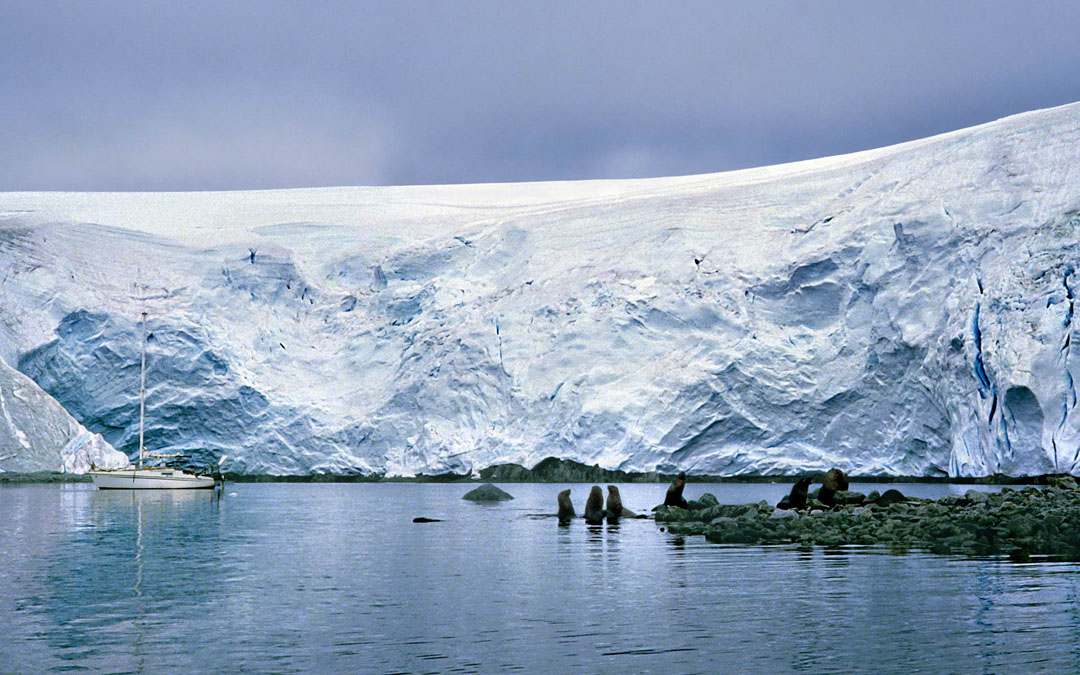
A small bay on Omega Island (3.7 km long) in the Melchior Islands.
This photo was taken from a rubber boat just after Aomi freed herself from the reef.
The blue-white ice walls surrounding three sides of the bay crack and occasionally collapse with a thunderous roar.
A group of seals rests on the rocky shore in the foreground.
(Move the scroll bar above to see the full image.)
Read this episode on the "Blue Chamber" page.
As I described in the main episode, Aomi visited the ruins of an Argentine base on Gamma Island in the Melchior Islands.
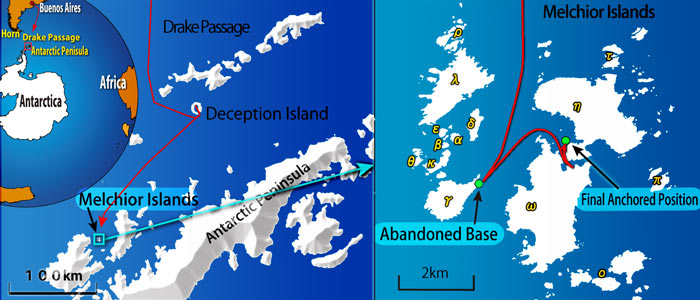
After leaving γ (Gamma) Island, she made her way between η (Eta) and ω (Omega) Islands in search of a safe place to anchor.
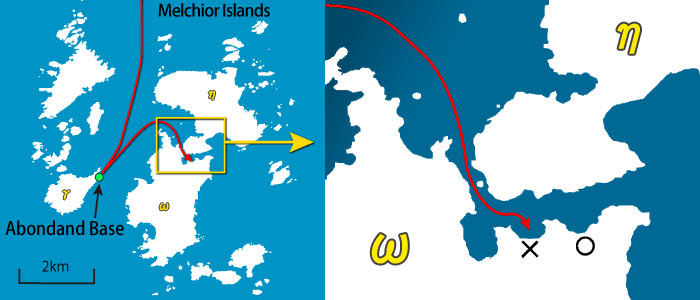
Aomi proceeded carefully, watching the depth finder closely. Since Antarctica is not fully charted, nautical maps are often unreliable, and undiscovered reefs could lurk nearby.
Soon, she entered a narrow channel between white ice domes and continued further in. It was my first time in a place like this, and I felt an eerie sensation as if I were stepping into a holy, white world.
I had no idea even how far away each ice dome was from me. As I moved forward, the landscape kept changing, yet I had no sense of how far I'd come. My senses and instincts, unaccustomed to this icy world, felt completely useless.
Before long, a small bay appeared ahead, surrounded on three sides by ice cliffs that looked ready to collapse at any moment. Anchoring there seemed impossible.
Still, I decided to enter the bay to investigate the seafloor. I moved forward slowly, keeping a close eye on the depth finder.
The water depth, which had been over ten meters, suddenly dropped to less than two. At that moment, Aomi struck something beneath and ran aground.

This photo shows Aomi, still aground on the shoal, enclosed by walls of ice like a hidden room, invisible from the outside. Naturally, there was no one around, and the nearest manned base, an American one, was about 100 km away.
The Antarctic summer was already ending, and it was time for the ships to leave. If I wasn't found, I would have to spend the winter alone. However, I didn't have enough food or fuel to survive the winter.
I had to find a way to escape, or I'd be in serious trouble.
*
Here are some methods for getting out of shallow waters.

The first scenario is when the boat runs aground on a gentle slope. As shown in the figure above, sailboats have a weighted part on the bottom called the "keel" that extends downward.
In this situation, reversing the boat might free the keel from the seafloor. However, if the boat runs aground at a higher speed, inertia can push it forward onto even shallower ground. In that case, simply reversing the engine won't be enough to free the keel from the seafloor.
What to Do:
- If another vessel is nearby, ask them to pull.
- Drop an anchor off the stern and pull in the anchor line using a winch.
(In this situation, you'll need a dinghy or rowboat.) - Swim and pull — It's just a joke!
If you run aground on a relatively flat seafloor, you might be lucky enough to turn the boat around.
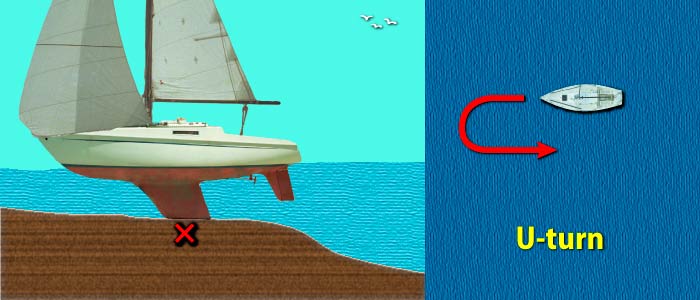
On a flat seafloor, it's often better to try moving forward instead of backing up, especially for sailboats, which typically have less power in reverse.
When turning around, even if the boat moves slightly forward, it probably won't make much difference in depth, since the bottom is relatively flat.
This U-turn approach is especially effective on a muddy seafloor. (Since the keel has touched the seafloor, in most cases, the boat will rotate around the keel on the spot rather than making a U-turn.)
However, if the seafloor is uneven and rocky, the above methods often don't work. In these cases, the usual approach is to tilt the sailboat to one side.
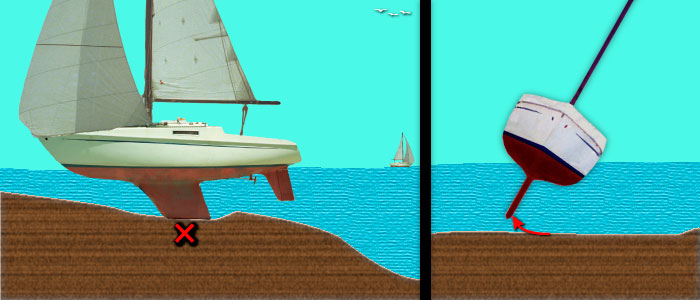
The figure on the right shows Aomi from the front. Tilting her to one side raises the tip of the keel, which might lift it off the seafloor. If you can reverse while holding this position, you should be able to escape the shallow water.
Ways to Tilt the Hull:
- If it's a small sailboat like Aomi, shift your weight to one side of the hull. (This works better if you have extra people on board.)
- Attach a rope to the top of the mast and pull from shore.
- Drop an anchor a few dozen meters off one side of the hull. Run the anchor line up through a block (pulley) at the top of the mast, then down to the deck, and pull it in with a winch.
- Use the wind in the sails to tilt the hull, just as you would while sailing.
Other tips? (If you know of any effective methods, please share them on the bulletin board.)
*
Despite all these attempts, Aomi was still stuck in the shallows. Would I have to spend the winter here after all?
Fortunately, the tide began to rise, lifting the hull, and Aomi slipped away from the shoal with ease.
All I had to do was "wait." It felt as if nature was laughing at me as I panicked and struggled to free Aomi from the shallows. I was so focused on what I should do, on what I could do.
It was a strange moment as if I'd glimpsed some invisible power within the sea.
The background of this page is a photo of Antarctic snow.